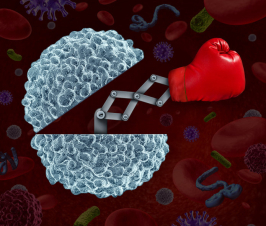The 4 Distinct and Interrelated Levels of Pain Management
I was reading an article recently that mapped out beautifully 4 levels of pain management. The 4 levels are distinct but also interrelate to one another, and for people experiencing chronic pain, multiple levels may need to be addressed, and it is likely that all levels are being addressed (either by a practitioner or in other areas of someone’s life) when pain is treated effectively. If you are experiencing recurring or chronic pain, consider the various levels listed below, and which levels you are primarily addressing, and consider looking into ways to address others.
Biochemistry
Supplies the building blocks for your body through proper nutrition and supplementation
Herbal remedies, such as curcumin, comfrey, boswellia and jamaican dogwood are wonderful approaches to pain, but lowering inflammation in the body through the elimination of sugar and refined carbohydrates is a more fundamental aspect of how the biochemistry of the body contributes to pain generation/perpetuation. Cleaning up the diet, and maximizing hydration and nutrition, are crucial steps to giving the body the building blocks it needs to run efficiently. Dehydration and deficiencies in vitamins and minerals such as magnesium and B12 can potentially cause, or exacerbate, pain. Sugar can certainly make pain worse.
Structure
Aligns the body and optimizes movement patterns and muscular integrity
Chiropractic, massage, and other physical therapies are excellent for maintaining the structure of the body. When the body is structurally impaired, through a fixation, tension, tear, or trauma, it is important to physically address it. AND – keep in mind that injuries take 6-8 weeks to heal. If pain is continuing beyond this amount of time, it is not usually because of the damage which was caused by the injury, because the injury is actually healed. This is incredibly important to realize. Structural therapies are great for the short term to get things back in alignment, but your own musculature and movement habits are really what should keep your body in balance – not a weekly adjustment.
BioEnergetics
Moves blockages in the subtle energy field and moves qi
Acupuncture, homeopathy, energy healing, cranial sacral, and microcurrent are additional therapies which can address underlying components of pain. Often there are energetic blockages as a result of pain states, which can become locked in the body over time, and need to be released. Often times things like acupuncture or homeopathy are very effective at getting the energy field moving fluidly again.
Mind-Body-Spirit
Is our body’s pain trying to tell us something?
Pain is a real thing, and the origin of it is in the brain. So, what is our brain trying to tell us when we feel pain? It’s trying to tell us to pay attention. In acute pain, we know that limiting movement, in order for the affected part to heal is the communication. But what about chronic pain that has nothing to do with an injury? When all of the other levels have been addressed, it is time to go deeper into the pain on an emotional level. So often, past traumas, conflicts, and problems are covered up and never processed, and the experience of pain is the only way for the body to let us know that it’s time to address what has yet to be processed. It might be hard to go back and process these experiences, but it will be worth it, for the release of pain is likely to come with it.
 Node Smith, associate editor for NDNR, is a fifth year naturopathic medical student at NUNM, where he has been instrumental in maintaining a firm connection to the philosophy and heritage of naturopathic medicine amongst the next generation of docs. He helped found the first multi-generational experiential retreat, which brings elders, alumni, and students together for a weekend campout where naturopathic medicine and medical philosophy are experienced in nature. Three years ago he helped found the non-profit, Association for Naturopathic ReVitalization (ANR), for which he serves as the board chairman. ANR has a mission to inspire health practitioners to embody the naturopathic principles through experiential education. Node also has a firm belief that the next era of naturopathic medicine will see a resurgence of in-patient facilities which use fasting, earthing, hydrotherapy and homeopathy to bring people back from chronic diseases of modern living; he is involved in numerous conversations and projects to bring about this vision.
Node Smith, associate editor for NDNR, is a fifth year naturopathic medical student at NUNM, where he has been instrumental in maintaining a firm connection to the philosophy and heritage of naturopathic medicine amongst the next generation of docs. He helped found the first multi-generational experiential retreat, which brings elders, alumni, and students together for a weekend campout where naturopathic medicine and medical philosophy are experienced in nature. Three years ago he helped found the non-profit, Association for Naturopathic ReVitalization (ANR), for which he serves as the board chairman. ANR has a mission to inspire health practitioners to embody the naturopathic principles through experiential education. Node also has a firm belief that the next era of naturopathic medicine will see a resurgence of in-patient facilities which use fasting, earthing, hydrotherapy and homeopathy to bring people back from chronic diseases of modern living; he is involved in numerous conversations and projects to bring about this vision.

















